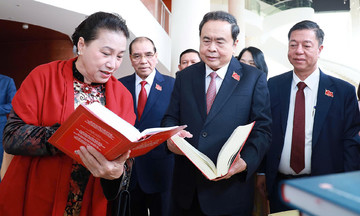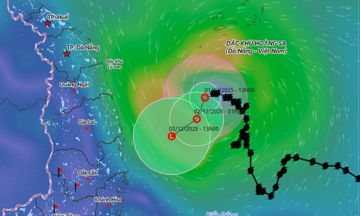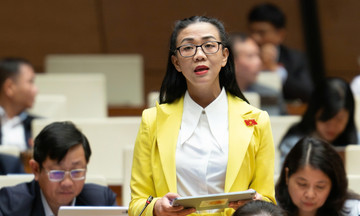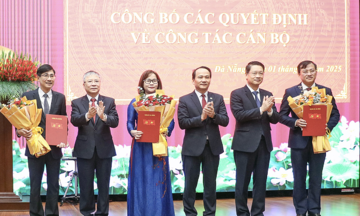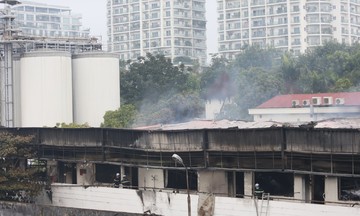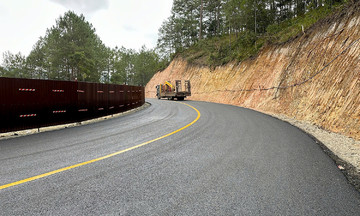The cameras are strategically placed on one of two types of roads: busy thoroughfares and known accident blackspots. Busy roads include Dien Bien Phu, Truong Dinh, Le Quy Don, Tran Quoc Thao, Nguyen Thi Minh Khai, Pasteur, Mac Dinh Chi, Nguyen Van Cu, and Tran Hung Dao, primarily in what were former districts 1 and 3. Additionally, two notorious traffic blackspots, Dang Thuc Vinh and Le Van Khuong in former district 12, are also equipped with these devices.
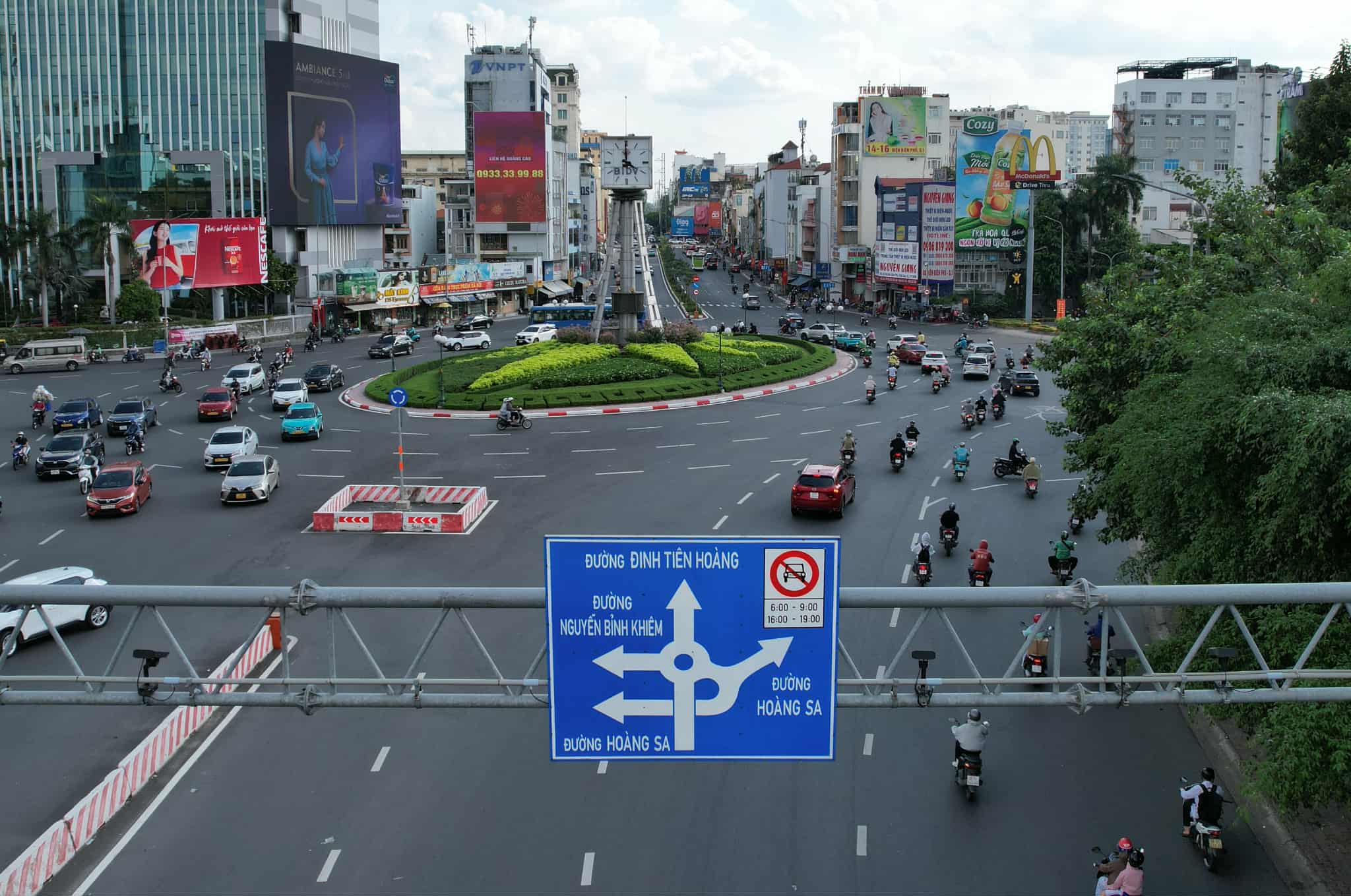 |
An AI camera mounted on a gantry for surveillance before the Dien Bien Phu roundabout (former District 1). Photo: Dinh Van |
Lieutenant Colonel Nguyen Thi Thanh Nga, Deputy Head of the Ho Chi Minh City Traffic Police Department (CSGT), stated that camera locations were selected based on scientific and practical criteria. These include accident-prone areas, high traffic density, and locations where violations are frequent. This approach aims to optimize surveillance and ensure efficient data transmission to the central processing unit.
In operation, the cameras automatically detect violations such as: failing to obey traffic signals, driving in the wrong lane, speeding, not wearing a seat belt, and using a phone while driving. The system records the date, time, vehicle type, and license plate. This information is then transmitted to the processing center at the Urban Traffic Management and Operations Center, located at the entrance of the Thu Thiem tunnel.
The processing center houses dozens of screens and computers connected to the cameras. Specialized officers then cross-reference and verify the collected information before issuing violation notices and penalty decisions, typically within 8-10 days. The system identifies violating vehicles on screen by highlighting them with a red frame or drawing directional lines for incorrect maneuvers. Since its launch on 1/9, the system has recorded over 3,100 violations. Unlike conventional cameras, these AI-integrated devices can identify many vehicles simultaneously.
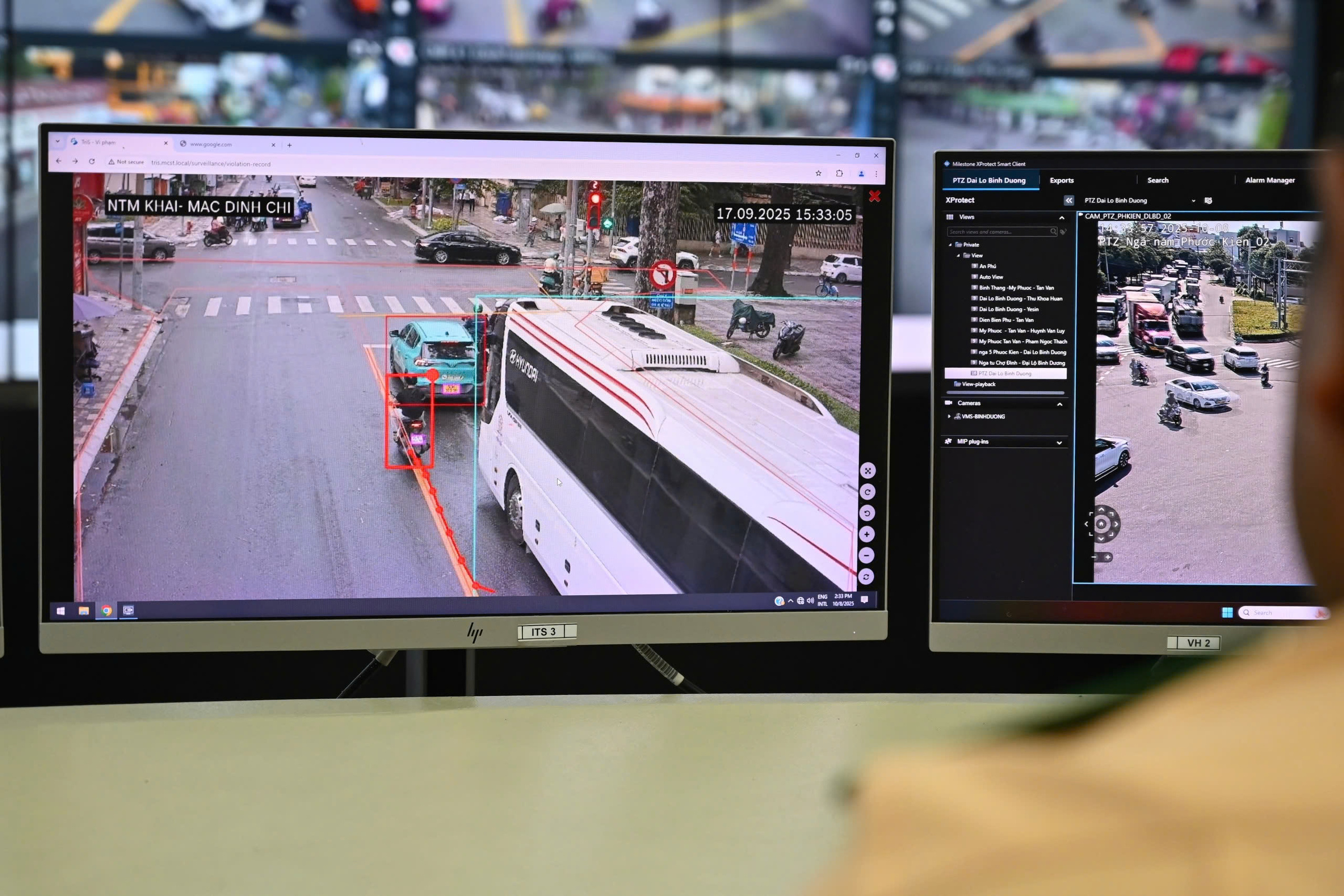 |
An AI camera transmits images to the center, displaying a motorbike (in a red frame) violating a solid line at the Nguyen Thi Minh Khai - Mac Dinh Chi intersection. Photo: Dinh Van |
Lieutenant Colonel Nguyen Thi Thanh Nga emphasized that the AI camera violation processing procedure is designed to be rigorous, transparent, and accurate. This approach helps shorten processing times and minimizes external influences. Beyond these new AI cameras, the Ho Chi Minh City Traffic Police Department already operates more than 1,200 cameras across the city for general traffic monitoring, operational management, and maintaining security.
Traffic camera pilot programs are also underway in other major cities. In Hanoi, a similar system launched on 24/9. Within its first half-day of operation, it detected 1,452 vehicles running red lights. Nationally, the Traffic Police Department recently submitted a proposal to the Ministry of Public Security to install thousands of AI cameras across the country to monitor and detect 20 specific types of traffic violations.
Dinh Van



